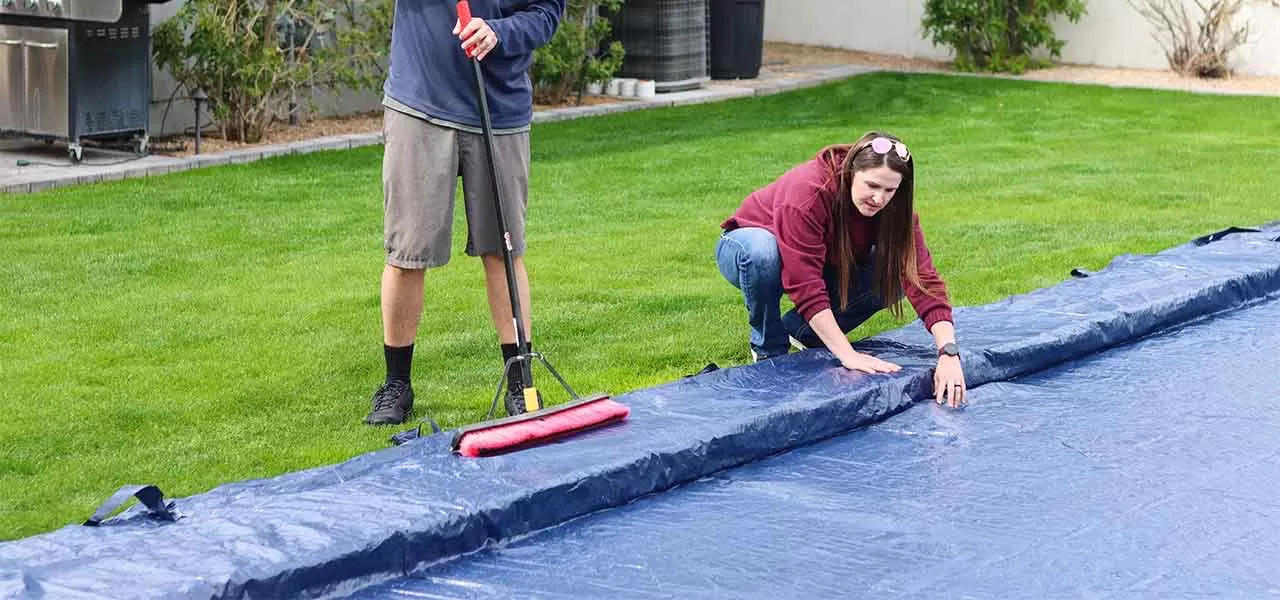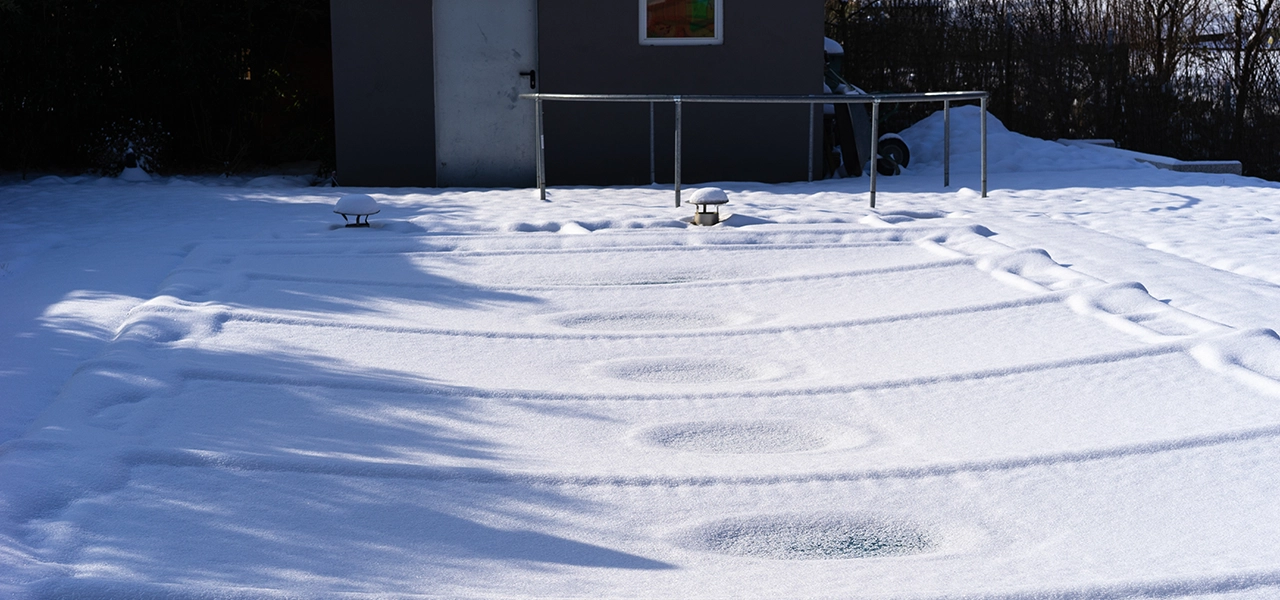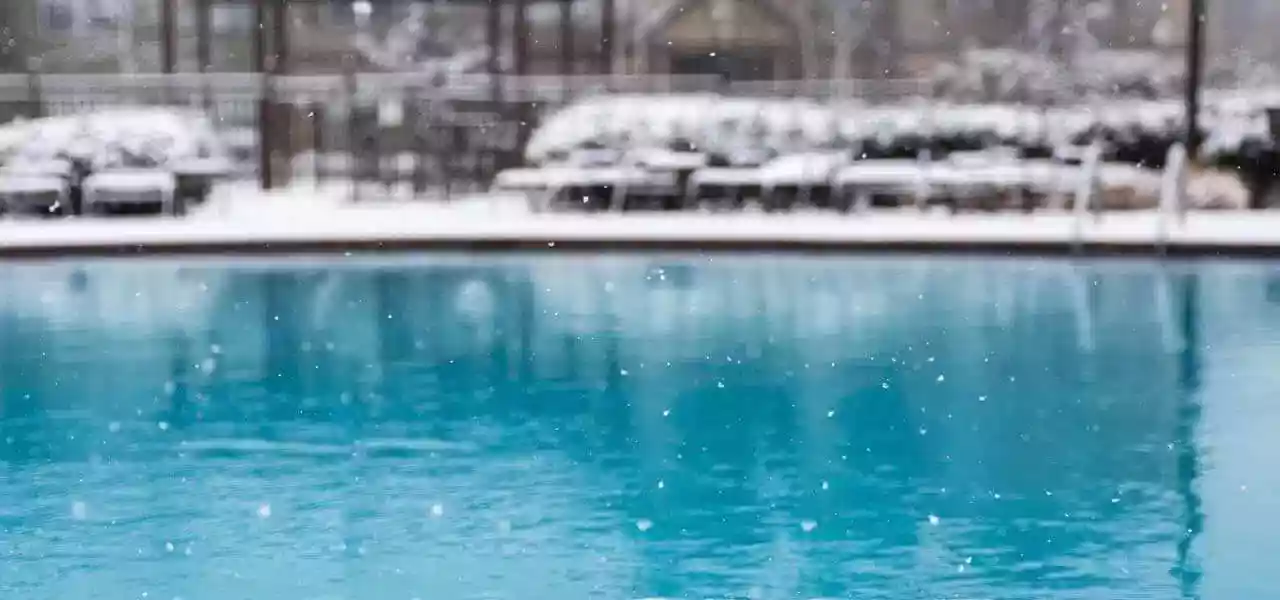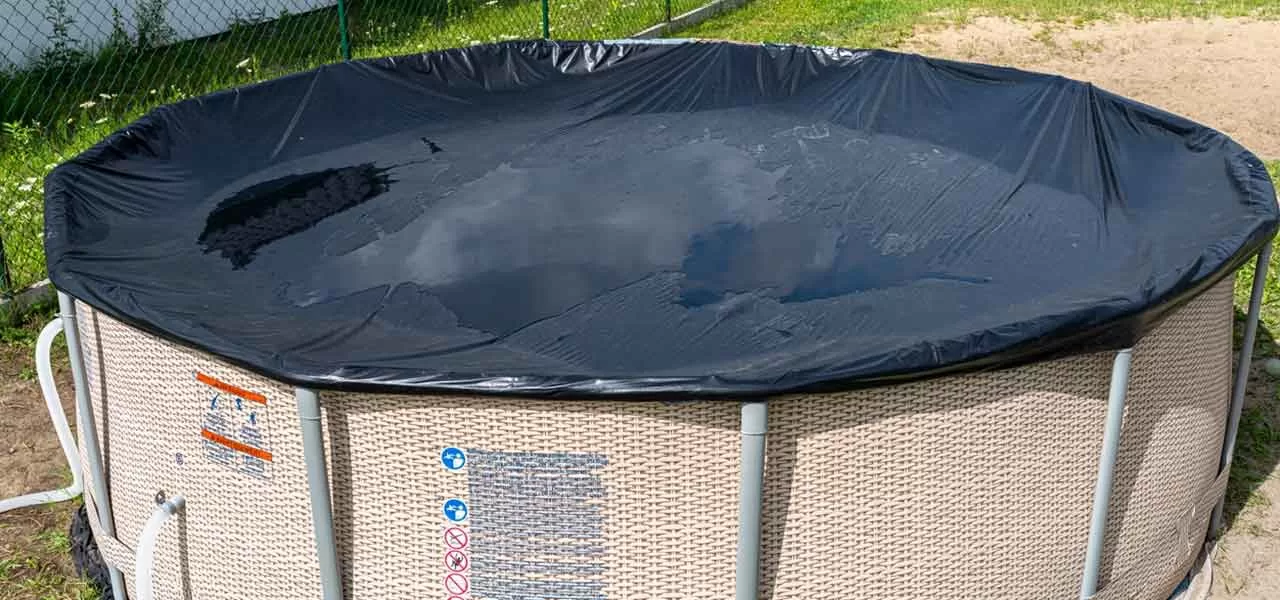National Pool Closing Day is an annual event eagerly awaited by pool owners as summer transitions into fall. As temperatures begin to drop, and leaves start to fall, it’s time to bid farewell to swimming season. From winterizing your pool equipment to safeguarding your pool’s water quality throughout the off-season, we’ve got you covered with expert advice to make the transition from summer to winter as seamless as possible. Join us as we delve into the essential steps and preparations that will help you preserve your pool’s integrity and ensure it’s ready for another season of aquatic enjoyment when the warm weather returns.
When Do You Close the Pool?

For pools in northern states, mid-September is the best time to close the pool, while those in the country’s mid-section can wait another 2-6 weeks before the weather turns cool. It’s best to wait until air and water temperatures are below 65° F to close the pool.
Each calendar week as we head into autumn, another 100 mile strip across the country sees their trees change color, and weeks later lose their leaves.
For sunbelt pools in the southern regions, if you experience freezing temperatures regularly during winter, common in northern Arizona, Florida and Texas among other areas – you should consider winterizing your pool.
First Time Closing a Pool?
In most cases, it’s best to take down the pool, before freezing night temperatures come to your area. Here’s a post on How to Drain & Store an Intex Pool for winter. For other new pool owners, above ground and inground, winterizing your own pool is something you should grab by the horns and learn to do yourself before you get in the practice of paying someone else to do what you can do yourself.
10 Steps to Winterize a Swimming Pool
For those of you needing a refresher on the steps involved in a DIY pool closing, here are the 10 steps to winterize any backyard swimming pool – in-ground or above ground.
- Clean the pool thoroughly. Vacuum, brush and skim the pool.
- Test and balance the water – pH, Alkalinity and Calcium Hardness levels.
- Add our non-chlorine pool shock and run pump for 4 hours to circulate.
- Add our Stain & Scale preventer and run pump for 4 hours to circulate.
- Lower water below the skimmer; 3″ for winter covers, 12″ for safety covers.
- Remove equipment drain plugs, filter cartridges or DE grids for cleaning.
- Blow the pipes clear of water, with our Cyclone blower or air compressor.
- Plug the wall returns, cleaner lines, and skimmer snugly to keep out water.
- Add our winter algaecide and floating sanitizer, skim the pool once more.
- Cover the pool with a floating solid winter cover or drum-tight safety cover.
5 Reasons a Sunbelt Pool Should Winterize

There are a dozen reasons why closing the pool, or at least covering the pool, makes sense for pools in the sunbelt states. If you have winter temps of 40-60° F during winter, cover the pool to block winter cold, wind, and sunlight.
- No worry about freezing temperatures and costly repairs.
- No pool duties for 3-6 months – take a few months off!
- No pump/filter/heater operating costs and very low chemical cost.
- No wear and tear on pool equipment and pool surfaces.
- No worry about safety with a safety pool cover installed.
For those of you who get no use out of your pool for 3-6 months out of the year, but still have to maintain it, winterize the pipes and equipment, add a Winter Chemical Kit, put on a winter cover – and take a vacation from pool maintenance!
Safety Covers look great, protect your pool, protect your family, and they can last 15 years or longer. Even if you don’t winterize the pool, using a winter safety cover has many benefits for a sunbelt pool. Your pool will stay perfectly clean with very few chemicals and filtering.
Freeze Sensors can also be added to your covered pool, for complete peace of mind during cold winter nights. The Intermatic freeze sensor mates with the Intermatic Digital timer, which snaps into any Intermatic pool time clock box. This turns on your pump(s) when outside air temperatures get close to freezing. Battery backup and program memory are always ready, to prevent a freeze damage repair!
So enjoy your pool closing this weekend! Or if you have a few more weeks (or months) of swimming or at least enjoying the view – you have more time to get ready.





Thanks for all the info you post. I recently bought the cyclone blower and man it’s powerful. I have 3 return lines/valves one for the steps, one for the wall and one for the floor. I got pretty wet when trying to plug the returns with expansion plugs with the valves wide open. Can you close them 1/2 way to decrease the flow to make it easier to put in plugs since I don’t drain below the step outlets(that would mean draining a lot of water). Also, should you leave the valves in the open position and close them once you have the plug in? Thanks. Jeff
Hi Jeff, yes after an initial good blast of air with wide open wall return valve, you can close it down to reduce air volume while plugging, sure.